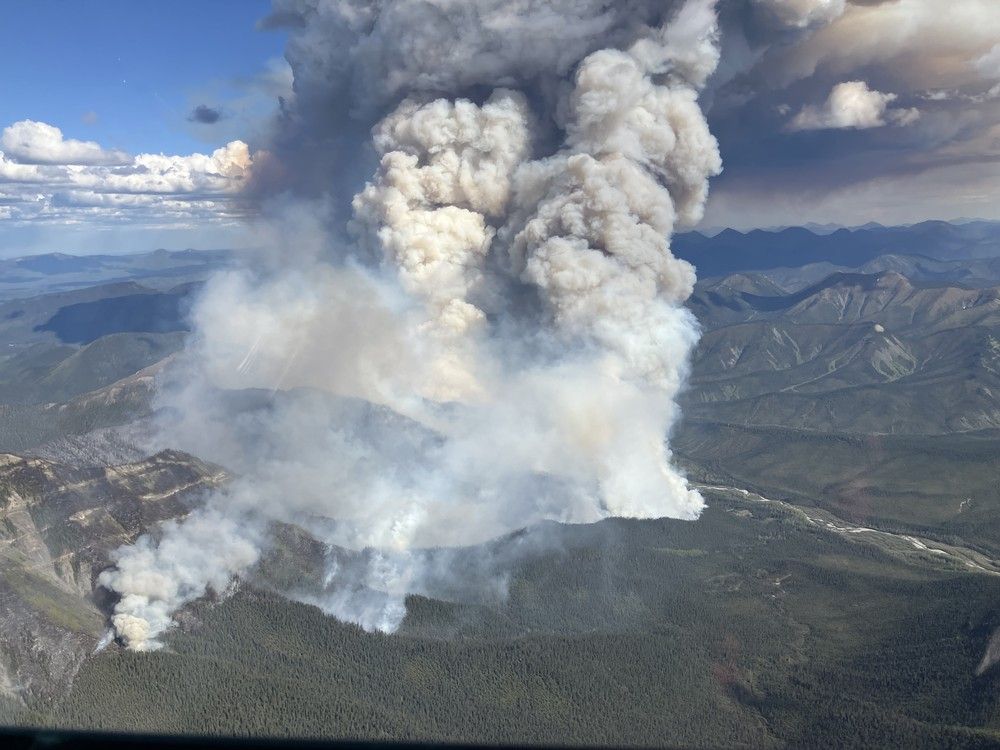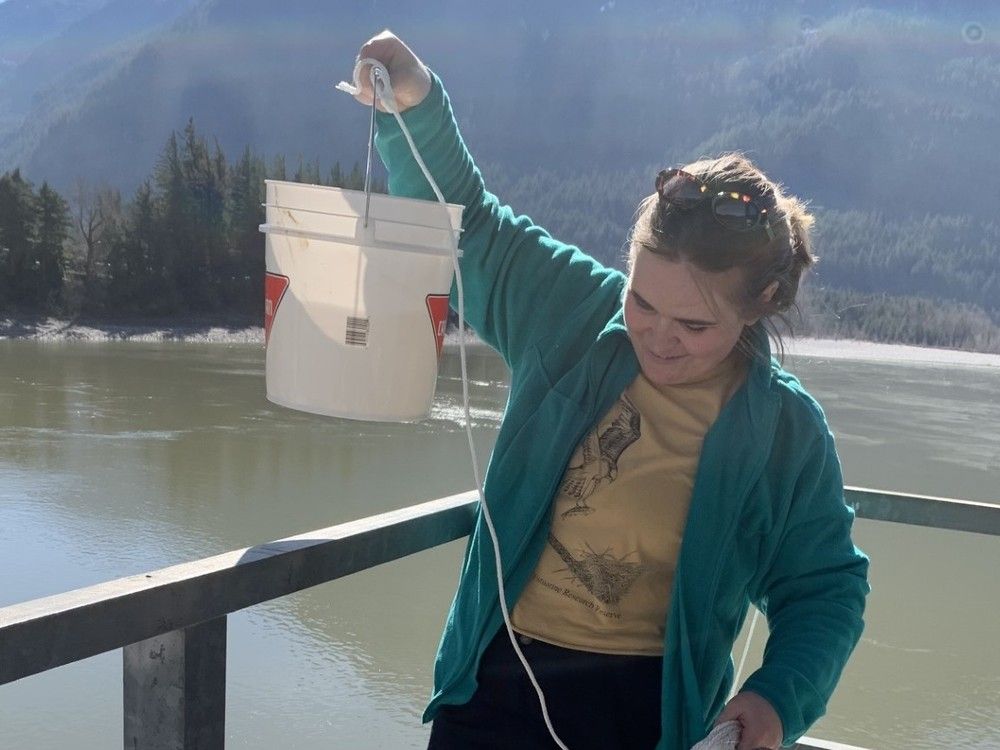
Ash and chemicals from some of B.C.’s largest wildfires are winding up in the Fraser River, which could eventually lead to low oxygen levels and harm marine life, say UBC researchers.
In a peer-reviewed study, published in the journal Science of The Total Environment , scientists linked increases in the concentrations of compounds like arsenic and lead, and nutrients such as nitrogen and phosphorus, to wildfires that had burned near the 1,375 kilometre long river.
These are all compounds that are found naturally in the water. However, researchers tracked a significant increase in compounds as wildfires were happening near the river. The researchers studied fires within 500 metres, 1,000 metres and 1,500 metres.
Fires burning close to major waterways had immediate influence on water quality, said Emily Brown, a research scientist at UBC’s institute for the oceans and fisheries. The more distant wildfires had delayed influence on water quality.
“For these closer fires, the impacts were generally the strongest within the first couple of months, within the first zero to three months,” said Brown. “And then for the farther-away fires, the impacts were strongest nine to 10 months after the fire burned.”

Using monitoring data collected by Environment and Climate Change Canada over the past 20 years, the UBC researchers calculated that up to 16.3 per cent of the variation in water quality could be attributed to wildfires.
Scientists say more research is needed to know whether this amount could cause damage to the marine life, but what they are concerned about is climate change causing more wildfires that burn hotter and torch more land area. Brown said research shows that an increase in wildfires could hurt downstream marine ecosystems.
“The research is pretty early, so we’re just kind of like flagging this connection, and hoping that more research will pick this up and be able to identify how much wildfires are impacting the water quality,” she said.
“The concern comes when we know that wildfires are increasing and they’re becoming past the point of natural so we’re now also considering that this could cause further worsening of water quality in the Fraser River in the future.”
Brown said fish, like salmon, would be impacted by an increase and severity of wildfires spewing metals and other toxins into the water. Lower oxygen can lead to bigger algae blooms.
“That’s what happens when we have too many nutrients entering the ocean, and we get these decreases in dissolved oxygen in the water, and that causes issues for any kinds of fish, also shellfish. Most aquatic life would be negatively affected by further reductions in oxygen,” she said.
Researchers found there were increases in the concentrations of metals, such as copper, lead and zinc, tied to wildfires.
The problem, Brown said, is that when metals enter the ocean, they tend to sink and go to the ocean floor.
“That’s where we have a lot of the shellfish living, and they can then take up these heavy metals and contaminate the shellfish. So that’s a concern if people want to eat shellfish from this area, and also the health of the shellfish as well. It can cause them to die prematurely,” she said.
In a study earlier this year, the same researchers found that most of the water in the Fraser River comes from snowmelt, but with climate change and less snowmelt, this could shift to mostly rain.
“This is all very connected to climate change. As we’re having these hotter, drier summers, and more severe wildfires there’s a clear connection with the carbon cycling.”
Black carbon is a long-lived form of carbon. And when this black carbon, formed in the forest, is delivered to rivers and then carried to the ocean it can sink to the bottom, explained Brown.
This means that carbon sequestration may lessen in the future and black carbon could become an additional source of carbon dioxide to the atmosphere, she added.
Researchers recommend that B.C. support more Indigenous-led fire stewardship through increased cultural and prescribed burning, the removal of jurisdictional and permitting barriers, sustained funding for training and equipment, and the establishment of Indigenous-led governance and decision-making structures.
“Indigenous-led fire stewardship is a really important thing, because we know that B.C. is a fire prone area, and the province has managed fire mostly by using fire suppression as the main method of fire management,” said Brown.
“But we’re seeing now that fire suppression is leading to this really dangerous build up of flammable materials in the forest and without regular burning of these forests that are adapted to have fires frequently, these fuels are accumulating, and when fires do ignite, they burn hotter and faster and they cause a lot more damage.”